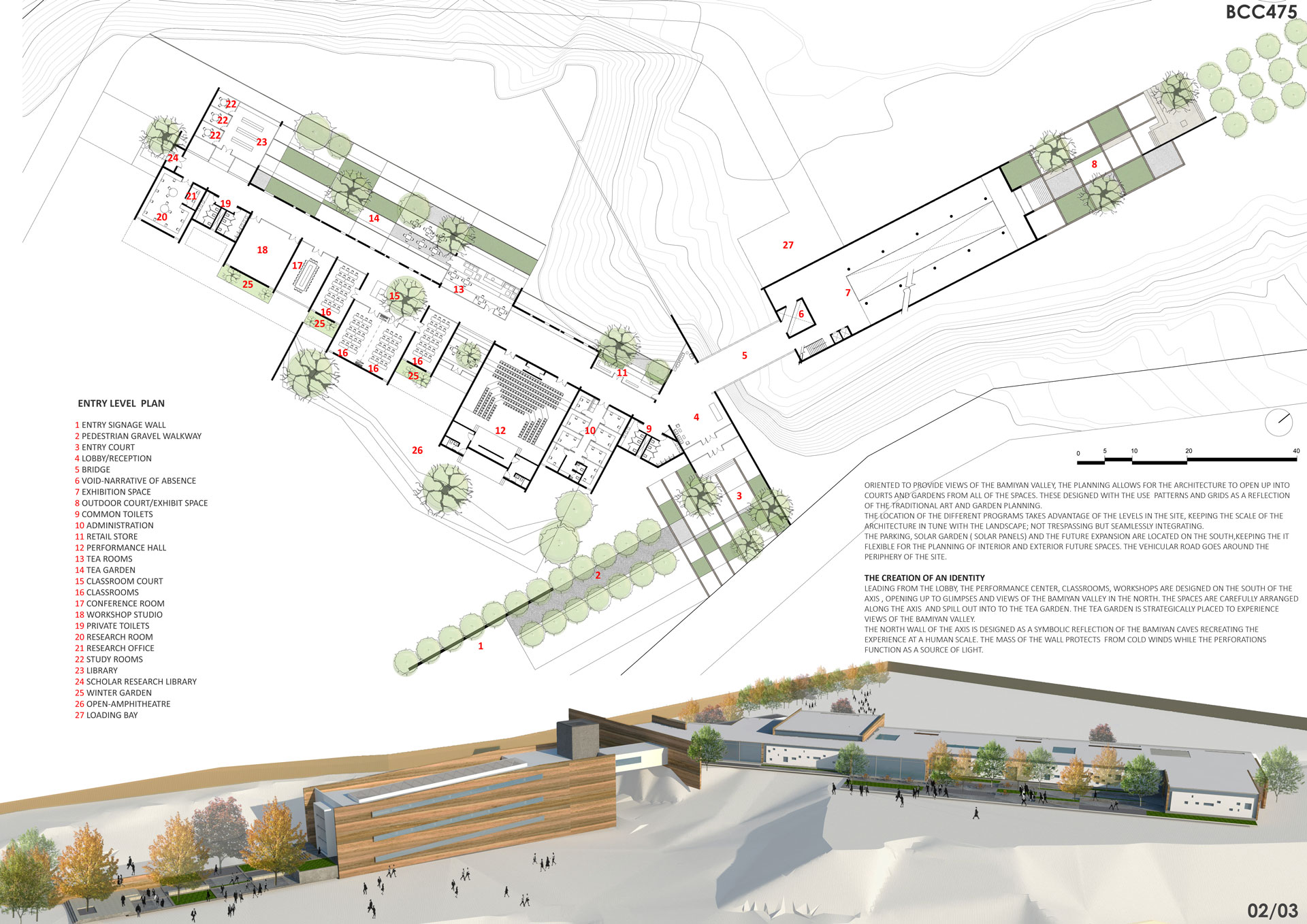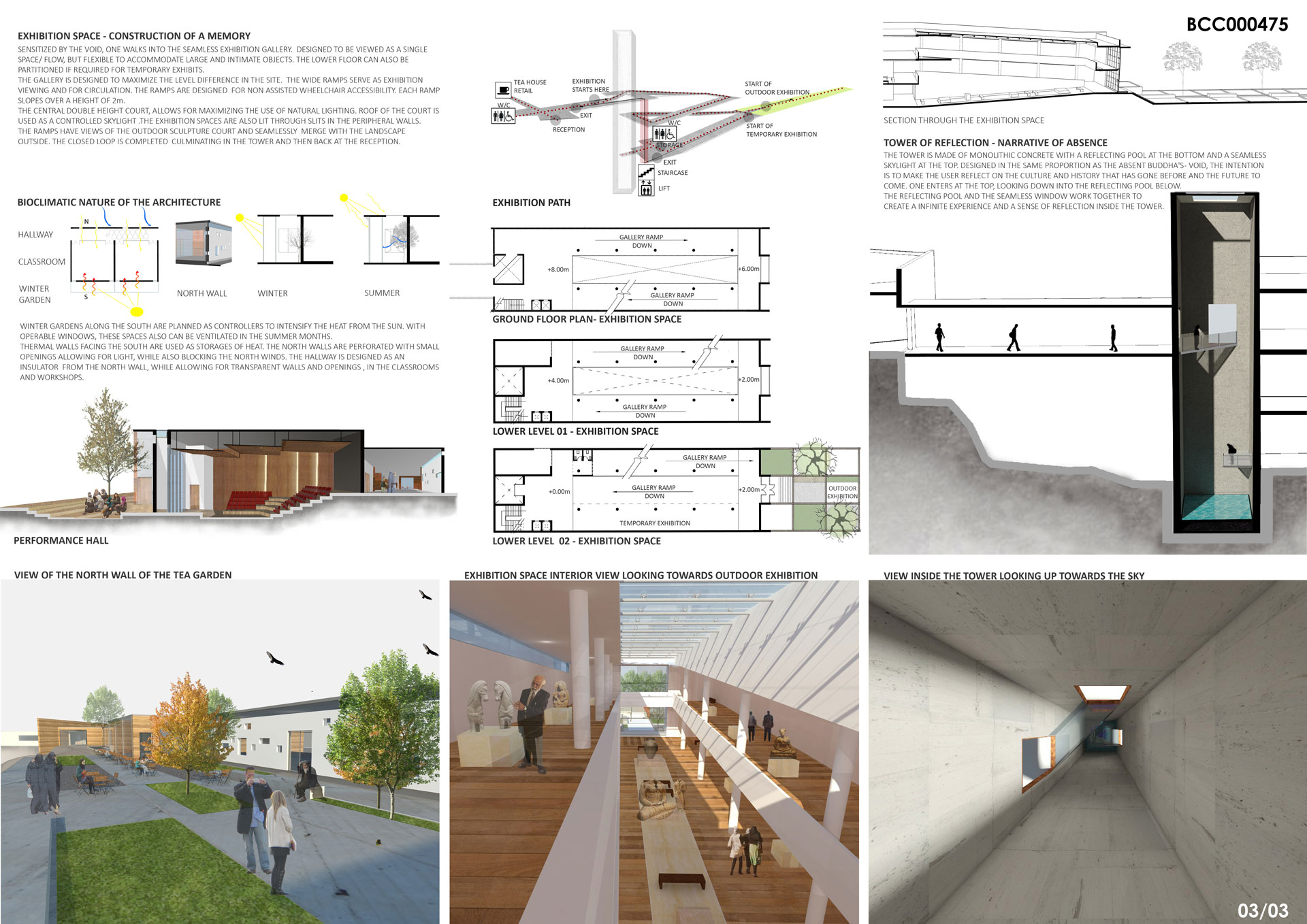Competition
Urban Design
Project Detail
2014
Sheets
StudioXS
Bamiyan Cultural Center
We had just missed taking part in the competition for the Guggenheim Museum at Helsinki , and when we read the brief for the Bamiyan Cultural Center it really excited us. Every element of the brief , the site, the history location the country itself Afghanistan what it has gone through and where it was. The climate and landscape itself was so extreme. Getting to the core of the design was a lot of analysis , understanding planning and discussions long into the night . We were thrilled by what we achieved as an end result.
The idea of “memory” and how to construct it when the symbols were all taken away. Create a context for the exhibits that one had to see, and in some aspects try and go past the immediate reality of where they lived.
Our challenge was to see if architecture could really impact it at all.
The intention of the design is to translate the above into an experience, through three axis.
The Narrative of Absence is the Tower of Reflection
The tower is made of monolithic concrete with a reflecting pool at the bottom and a seamless skylight at the top. Designed in the same proportion as the absent Buddha's – Void, The intention is to make the user reflect on the culture and history that has gone before and the future to come. The last experience after the Exhibition Space is the bottom of the Tower of Reflection looking up towards the sky. The reflecting pool and the seamless window work together to create an infinite experience and a sense of reflection inside the Tower.
The Construction of a Memory is the Exhibition Space
Sensitized by the void, one walks into the seamless Exhibition Gallery. Designed to be viewed as a single space/ flow, but flexible to accommodate large and intimate objects.
The Creation of an Identity is the Axis taking you to the Performance Center, Classrooms,Workshops and the Research Center.
The North Wall of the Axis is designed as a symbolic reflection of the Bamiyan Caves recreating the experience at a human scale. The mass of the wall protects from cold winds while the perforations function as a source of light.



